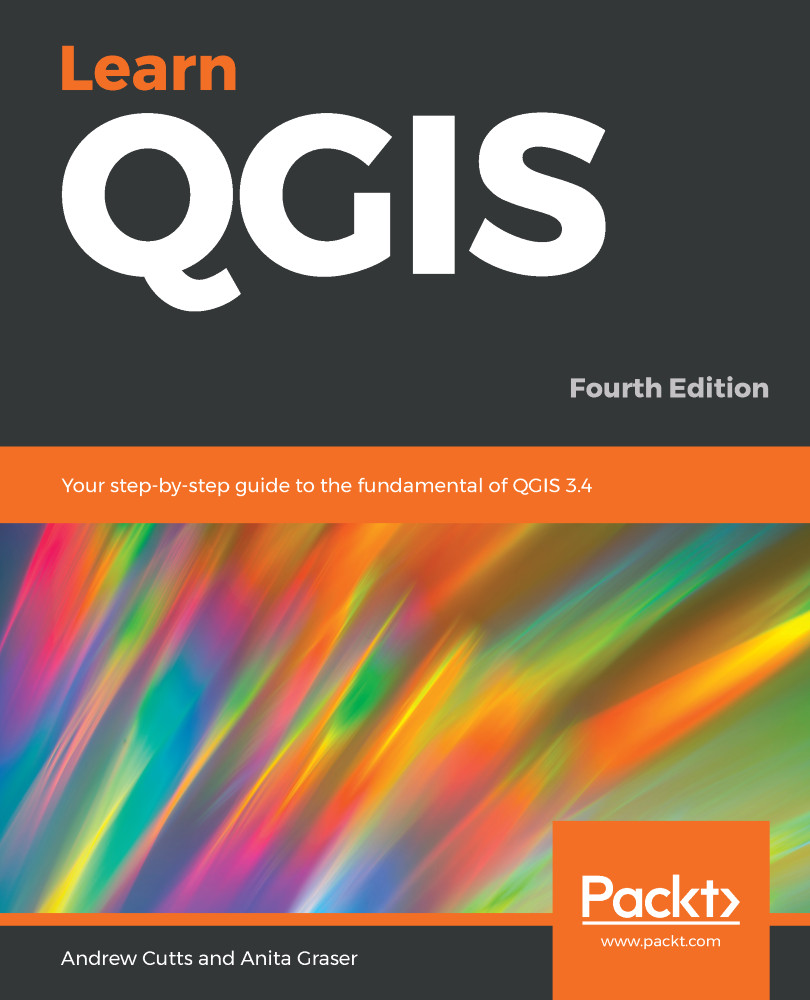Raster data, including, but not limited to, elevation models or remote sensing imagery, is commonly used in many workflows. The following exercises show common raster processing and analysis tasks such as clipping to a certain extent, creating relief, slope rasters from digital elevation models, and using the raster calculator.
-
Book Overview & Buying

-
Table Of Contents

Learn QGIS - Fourth Edition
By :

Learn QGIS
By:
Overview of this book
QGIS 3.4 is the first LTR (long term release) of QGIS version 3. This is a giant leap forward for the project with tons of new features and impactful changes. Learn QGIS is fully updated for QGIS 3.4, covering its processing engine update, Python 3 de-facto coding environment, and the GeoPackage format.
This book will help you get started on your QGIS journey, guiding you to develop your own processing pathway. You will explore the user interface, loading your data, editing, and then creating data. QGIS often surprises new users with its mapping capabilities; you will discover how easily you can style and create your first map. But that’s not all! In the final part of the book, you’ll learn about spatial analysis and the powerful tools in QGIS, and conclude by looking at Python processing options.
By the end of the book, you will have become proficient in geospatial analysis using QGIS and Python.
Table of Contents (8 chapters)
Preface
 Free Chapter
Free Chapter
Where Do I Start?
Data Creation and Editing
Visualizing Data
Creating Great Maps
Spatial Analysis
Extending QGIS with Python
Other Books You May Enjoy
